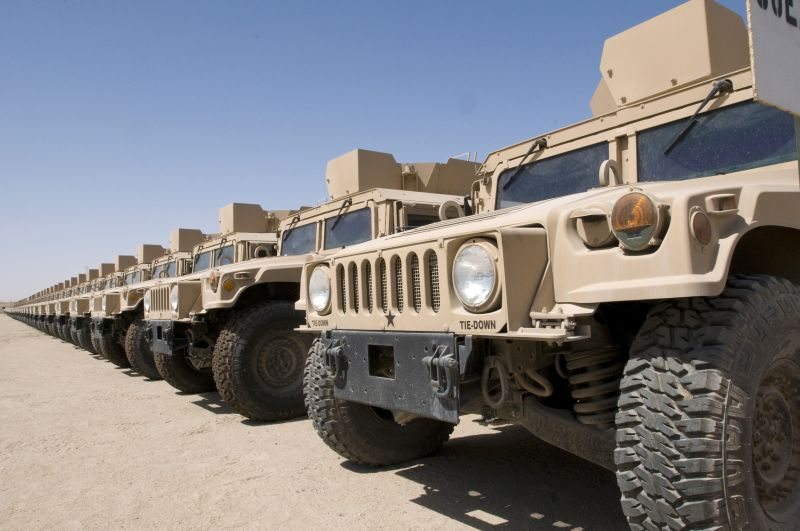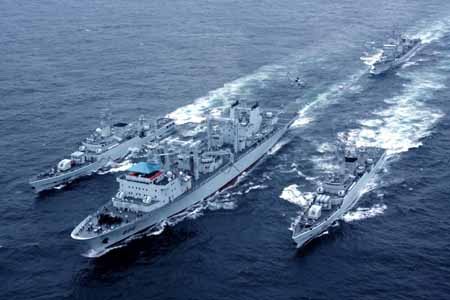When old Army equipment becomes obsolete, Soldiers receive new state-of-the-art machines to take their place.
But what happens to the old equipment? One Fort Drum agency is giving outdated surplus equipment a new purpose through the Defense Logistics Agency’s Disposition Services.
Rob DeLong, disposal service representative, handles millions of dollars’ worth of equipment and ensures each goes to another agency for reuse.
“We’re a one-stop shop for dealing with government surplus,” he said, adding that DLA processes millions of dollars of equipment each year.
DeLong said his office accepts obsolete equipment from Fort Drum as well as from nearby military agencies like the Marine Corps Reserves, Navy and Coast Guard. The local office isn’t a “full-service” site, meaning they only take in large items. Smaller items, like clothing, office supplies and gear, go to a site in Mechanicsburg, Pa.
“I deal with mostly wheeled, heavy equipment things you can drive,” DeLong said. “The government agency turns it in, I put it on record, barcode it and give it a label.”
Some weeks, DeLong said he processes around $500,000 in equipment, because he deals with big-ticket items like trucks, Humvees and other heavy machinery, which may boast a price tag of $30,000 to $100,000 or more.
Once the equipment is recorded in the system, agencies can submit requests, DeLong explained. Department of Defense agencies have priority over other federal, state and local organizations, schools, museums and nonprofit groups that also may be interested in receiving the surplus equipment stored here.
State and local law enforcement and fire departments often submit requests for trucks and Humvees for specific needs.
Once the request is approved, military, federal and state agencies receive a simple transfer of equipment. However, while military agencies receive the equipment and do not incur transportation costs, local organizations are required to pay an administrative fee to their respective state government.
While most of DeLong’s customers are on the East Coast, he said he has transported equipment all over the country, as well as internationally.
“The program is set up to fund itself,” DeLong said. “(The receiving organization is) not really paying for the equipment. They’re paying for administrative fees.”
“Because the federal government has already paid for the equipment, they give it to the state government,” he continued. “The state government charges a fee.”
Another condition is that the receiving agency must possess the item for 18 months, DeLong added.
“The state can show up at any time during the 18 months to make sure the equipment is there being used for the purpose originally stated,” he said. “After 18 months, the truck is theirs, and they can resell it.”
Equipment also goes to public auction through a contracted company.
The program has been in place in some form or another since World War II, DeLong added. Because of the surplus in military equipment following the war, the federal government found new ways to use the items. The government set up ways to control and regulate the process that has become what DLA does today.
DLA also finds ways to use equipment that isn’t functional.
Some tanks and trucks find their new home out on a Fort Drum or another military range, DeLong said.
“One of the other functions of what we do is supply real equipment out at the ranges,” he said. “To provide real-time training, they need real things to blow up. You can only blow up man-made targets so many times.”
“I’ve shipped equipment across the country,” he said. “After the AH-1 Cobra program ended, I shipped (aircraft) to ranges in Florida. Giving the military real (targets is) a pretty important part of (our program).”
Surplus equipment finds its final place in the scrap yard, DeLong explained. Anything from small pieces of metal to unusable equipment is set aside for scrap metal. All equipment is drained of all fluids and contaminants before being downgraded to scrap.
“Usually big companies will buy (our scrap metal),” DeLong said. “They aren’t coming in and buying just (one item), they’re coming in and buying 100,000 pounds of whatever scrap we may have.”
“Steel mills grind scrap down and melt it to make new metal items — a toaster oven or a new car,” he continued. “It’s all part of recycling. We all recycle cans and bottles, but the bigger stuff here is getting recycled and repurposed.”











